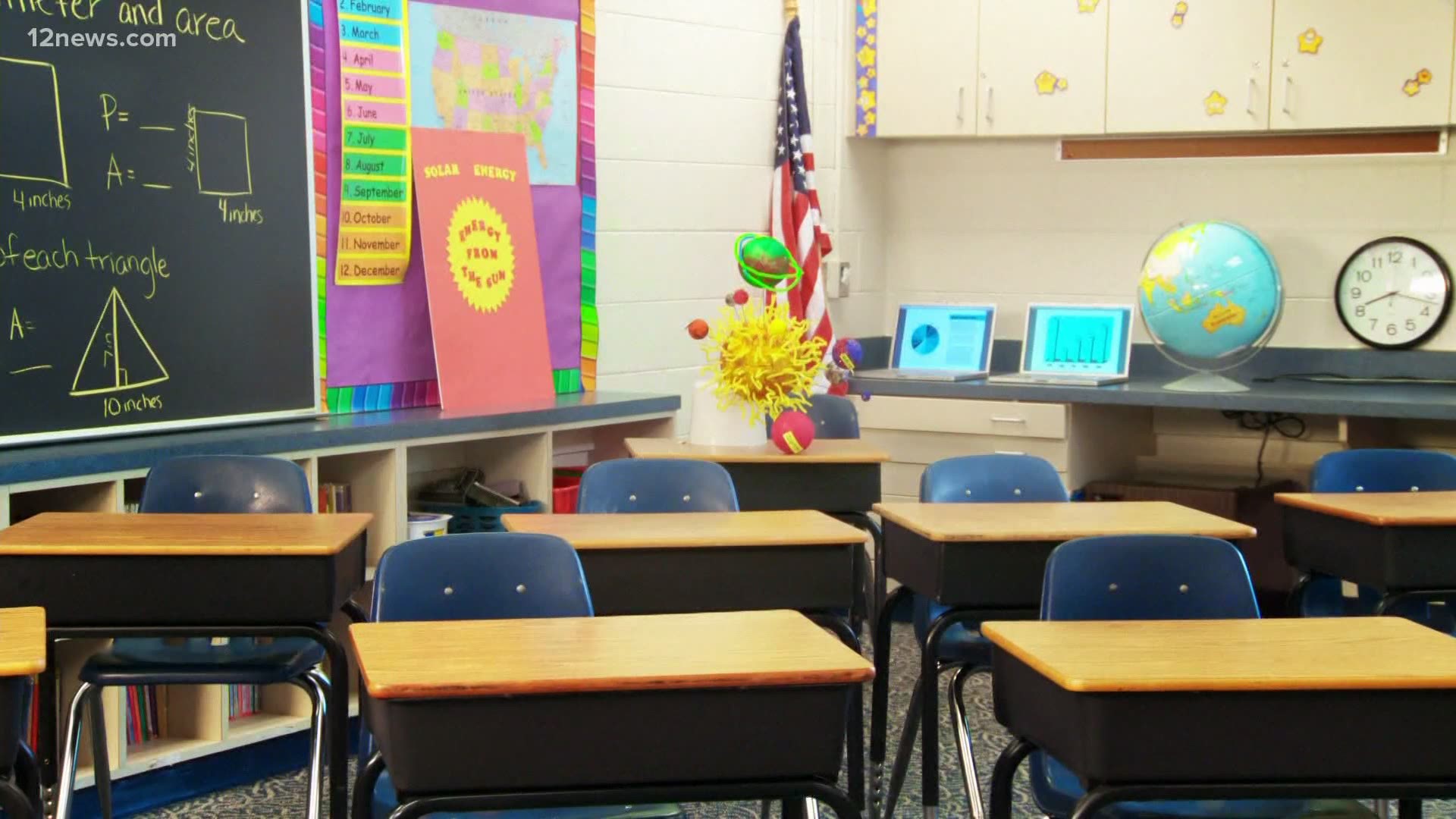State Superintendent Kathy Hoffman’s State of Education address Tuesday, Hoffman outlined how both students and educators have navigated the pandemic, wanting to see community spread lower to get students back to the classroom safely.
"For us to achieve our goals for in-person learning and a return to stability for our students, teachers, and families, we must ensure that school communities are safe for students and staff alike," Hoffman said.
A year like no other
For students, parents, teachers, and administrators, COVID-19 has presented a completely different school year, unlike any before it.
Just a step into Tracy Stuart’s government classroom at Vista Grande High School can show that.
“This is a whole different world,” Stuart said.
Tables fill the classroom, topped with chairs where his students once sat, right now he’s teaching them remotely.
“We do what's necessary for our kids,” Stuart said. “And you know? If it takes extra time on our part that's what we're going to do.”
Stuart said his administrators moved schools back online when cases of COVID-19 went up in the winter, saying the focus has been on student safety.
“I want to make sure people understand that their safety is what's most important,” Stuart said. “But we do want to have kids back we want to have kids in the seats.”
Monica Gellman has two of her kids in Tempe Union High School District and her third in Kyrene School District. All three are learning remotely currently.
“My kids are really doing okay. Academically, they're learning, their grades have been good, I've been in contact with their teachers,” Gellman said.
Many from administrators through even students, like Gellman’s middle child, have been searching for the balance between safety and consistency.
“She's got a cynical view of her peer's ability to social distance and take appropriate measures and she's worried about ending up in a bounce-back of in-person back home, etc.,” Gellman said.
Where the data is now
According to the Arizona Department of Health Services, benchmarks laid out for schools show all counties are recommended to be learning virtually with on-site support.
One of the state’s markers of substantial spread is when cases go above 100 per 100,000 people. Several districts in Maricopa County alone, including Mesa Public Schools, Gilbert Public Schools, Chandler Unified School District, and Peoria Unified School District have five, six, and even seven times that amount, according to the Maricopa County Schools Dashboard.
Despite that, many districts are teaching in-person in some form. Joe Thomas, president of the Arizona Education Association, said it’s concerning to teachers.
“It is disheartening,” Thomas said. “Educators feel like they were betrayed by some of the leaders in the state.”
What studies show
Few studies show the impact schools have on the community spread of COVID-19. Some that exist, point to how COVID-19 metrics look outside school walls as an indication of how schools affect community spread.
One study looking at Washington and Michigan concluded that when community spread is lower, schools do not appear to increase community spread.
However, the study states when community spread is higher, in-person learning models do increase community spread.
Another study examined how schools re-opening to varieties of instruction models impacts hospitalizations.
Researchers stated if hospitalizations were low, hospitalizations did not increase in most counties when schools returned to in-person or hybrid learning models.
"For counties that had higher rates of hospitalizations in the summer, our results were inconclusive, as they were inconsistent across data sources and statistical methods," the study states in the report overview.
What public health experts say
“Thinking about COVID in schools is a difficult problem because we really lacked the high-quality data that we need to make good decisions,” Dr. Joe Gerald, Associate professor of Public Health Policy and Management at the University of Arizona, said.
Gerald states there is evidence to show schools with proper mitigation in place, like mask use, physical distancing, and good ventilation, the transmission of the virus is low.
Gerald adds though, closing schools to help slow the spread of the virus is also a good mitigation strategy if it’s helping to stop the spread of COVID outside of the classroom.
“It's actually possible for both sets of studies and data to be true, even if they are contradictory,” Gerald said.
Adding, it’s beyond just the students and their parents affected by schools being open.
“The real challenge is thinking about the larger community: extended family members, friends, neighbors co-workers who are at risk from our core decisions,” Gerald said.
As for how Gerald views the situation in Arizona, he said he looks at how the data is trending, and what level the data is at.
COVID-19 data including cases and hospitalizations have been trending down in Arizona for a few weeks. However, Gerald notes the peak of the winter surge was so high, there’s still a ways to go to get back to lower levels of virus spread.
“I personally still think that we need several more weeks of sustained improvements to relieve pressure on our hospitals to give more time to vaccinate,” Gerald said.
As for when moving back to safely in-person can occur, Gerald estimates it’s more than a month away.
“We’re at least four to six away from that,” Gerald said.
Class of 2021: What to expect this school year
This year has certainly changed how we approach education during a pandemic. For more ongoing coverage of the Class of 2021 watch our YouTube playlist and subscribe.

